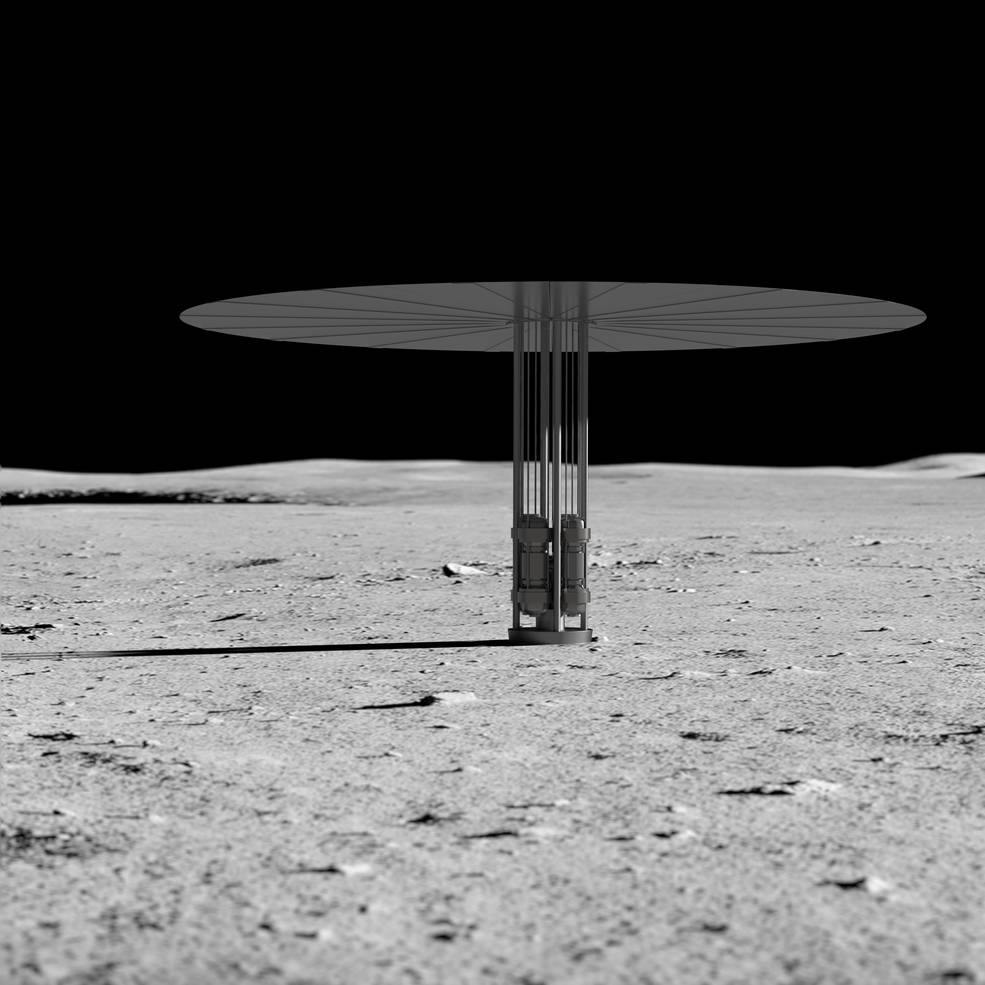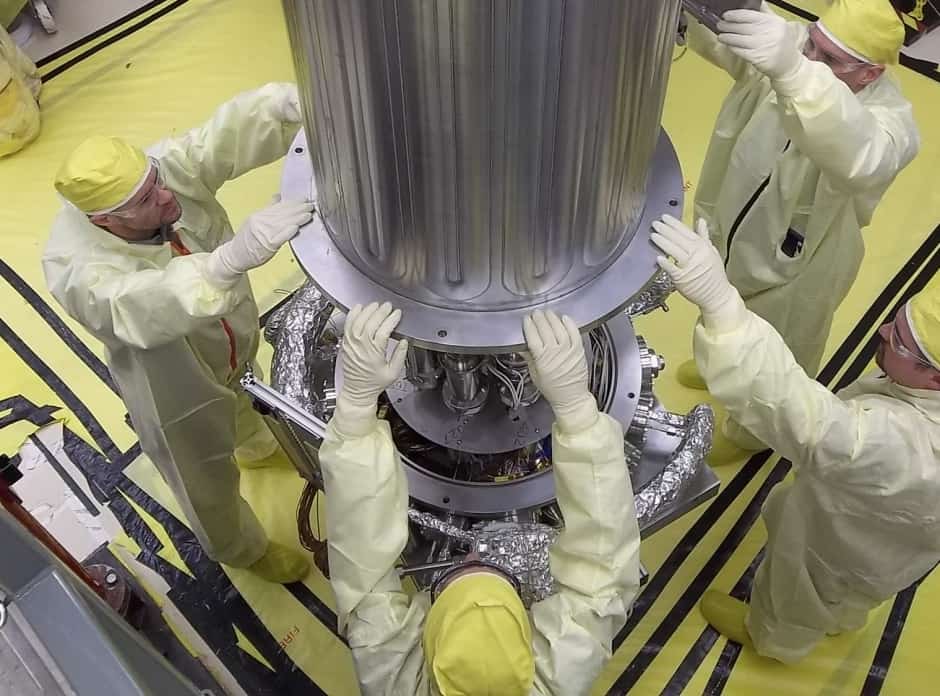The small fission system developed through the group’s so-called Kilopower Reactor Using Stirling Technology (KRUSTY) project is claimed to be capable of providing up to 10 kilowatts of electrical power continuously for at least 10 years.
The prototype system uses a solid, cast uranium-235 reactor core, about the size of a paper towel roll. Passive sodium heat pipes transfer reactor heat to high-efficiency Stirling engines, which convert the heat to electricity.

According to Marc Gibson, lead Kilopower engineer at NASA’s Glenn research centre in Cleveland, Ohio, the system could be used to help establish an outpost on the Moon where power generation from sunlight is difficult because of the long lunar nights.
“Kilopower gives us the ability to do much higher power missions, and to explore the shadowed craters of the Moon,” said Gibson. “When we start sending astronauts for long stays on the Moon and to other planets, that’s going to require a new class of power that we’ve never needed before.”
According to David Poston, the chief reactor designer at NNSA’s Los Alamos National Laboratory, recent experiments in Nevada demonstrated that the system can create electricity with fission power, and show that it is stable and safe no matter what environment it encounters. “We threw everything we could at this reactor, in terms of nominal and off-normal operating scenarios and KRUSTY passed with flying colours,” he said.

The team conducted the experiment in four phases. The first two phases, conducted without power, confirmed that each component of the system behaved as expected. During the third phase, the team increased power to heat the core incrementally before moving on to the final phase, a 28-hour, full-power test that simulated a mission, including reactor startup, ramp to full power, steady operation and shutdown.
Having demonstrated the concept, the team now hopes to get the green light for a demonstration mission that could it claims could pave the way for Kilopower systems being used to power human outposts on the Moon and Mars.
“Safe, efficient and plentiful energy will be the key to future robotic and human exploration,” said Jim Reuter, NASA’s acting associate administrator for the Space Technology Mission Directorate (STMD) in Washington. “I expect the Kilopower project to be an essential part of lunar and Mars power architectures as they evolve.”




Swiss geoengineering start-up targets methane removal
No mention whatsoever about the effect of increased methane levels/iron chloride in the ocean on the pH and chemical properties of the ocean - are we...